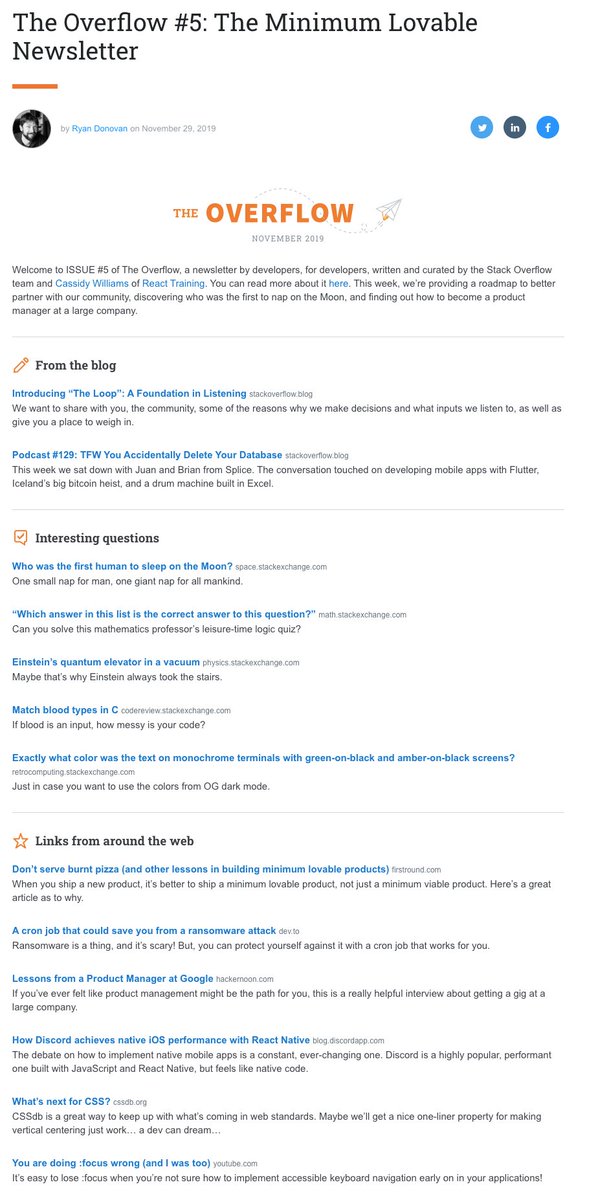1 - A community doesn't grow just because it's a great community. It grows when you attract more visitors than you're losing.
I'm going to share tactics and techniques which seem to be working best in 2022 (and when I'd suggest using each).
#CMGR
I'm going to share tactics and techniques which seem to be working best in 2022 (and when I'd suggest using each).
#CMGR
2 - First, the channels you use depend upon community type. i.e. it doesn't make sense to individually invite people to a support community. But it certainly does for peer groups.
Prioritise channels with biggest source of growth (notice the difference in influence too!)
Prioritise channels with biggest source of growth (notice the difference in influence too!)

3 - Let's go through these:
Search (great for support)
> Remove/archive old content.
> Match tags to what people search for.
> Target keywords with resources.
> Reduce orphan pages.
> Rewrite post titles
> Merge duplicate posts.
> Improve site load speed (esp. mobile)
Search (great for support)
> Remove/archive old content.
> Match tags to what people search for.
> Target keywords with resources.
> Reduce orphan pages.
> Rewrite post titles
> Merge duplicate posts.
> Improve site load speed (esp. mobile)
4 - Customer onboarding flow
> Introduce newcomers to community in onboarding.
> Place community above support center (see picture)
> Use federated search across support experience.
> Communicate when to use community vs. other channels.
> Introduce newcomers to community in onboarding.
> Place community above support center (see picture)
> Use federated search across support experience.
> Communicate when to use community vs. other channels.

5 - Feature community (and its sub-sections) prominently from the homepage.
SAP is a great example here.
SAP is a great example here.

6 - Integrate community deeply in the product.
> Prominent inclusion in the software (if applicable).
> Feature on packaging (if applicable)
> In-app community when relevant.
Quickbooks has great placement here.
> Prominent inclusion in the software (if applicable).
> Feature on packaging (if applicable)
> In-app community when relevant.
Quickbooks has great placement here.

7 - Show community in related topic articles.
When people are browsing documents/content, related discussions should appear.
In addition, if people have questions, they should be prompted to visit the community (see the Apple example).
When people are browsing documents/content, related discussions should appear.
In addition, if people have questions, they should be prompted to visit the community (see the Apple example).

8 - Customer / Audience Newsletter.
This can give you a good bump in traffic (not suitable for support, but great for success communities). You can feature contributions of top members.
p.s. StackOverflow has a 'best in class' newsletters featuring contributions of members.
This can give you a good bump in traffic (not suitable for support, but great for success communities). You can feature contributions of top members.
p.s. StackOverflow has a 'best in class' newsletters featuring contributions of members.

9 - Paid Social Ads.
These are useful in two ways:
1) Boosting 'success' content to a bigger audience.
2) Launching a small peer group / success community when you don't have an audience.
I've seen costs range from $4 to $120 to acquire a member.
These are useful in two ways:
1) Boosting 'success' content to a bigger audience.
2) Launching a small peer group / success community when you don't have an audience.
I've seen costs range from $4 to $120 to acquire a member.
10 - Social Media
> Promote good discussions on social media channels (see MoneySavingExpert example).
> Find new members for peers groups on LinkedIn
> Benefit from platform referrals if you're on FB/Reddit etc...
> Promote good discussions on social media channels (see MoneySavingExpert example).
> Find new members for peers groups on LinkedIn
> Benefit from platform referrals if you're on FB/Reddit etc...

11 - Member referrals
> Engage/feature members in a shared project (eBook, Guides, and encourage them to share it).
> Create lists of rankings of members (people, sadly, still love ego traps like this).
> Create newcomer / equipment guides (these get shared a lot).
> Engage/feature members in a shared project (eBook, Guides, and encourage them to share it).
> Create lists of rankings of members (people, sadly, still love ego traps like this).
> Create newcomer / equipment guides (these get shared a lot).
12 - Partnerships and Influencers (good for smaller groups)
> Host events / AMAs with influencers.
> List top influencers in the industry in community.
> Reach out to existing organisations to cross-promote each other).
> Host events / AMAs with influencers.
> List top influencers in the industry in community.
> Reach out to existing organisations to cross-promote each other).
13 - Direct invites.
Great for advocates, small peer groups, and superuser programs.
Target each invite specifically to the person (reference past contributions, unique abilities etc...).
Great for advocates, small peer groups, and superuser programs.
Target each invite specifically to the person (reference past contributions, unique abilities etc...).
14 - We often help clients build and execute a 12-week growth plan and use the channels that make the best sense to you.
Your resources dictate how ambitious you can be here.
Your resources dictate how ambitious you can be here.

15 - Don't leave growth to chance.
Organic growth doesn't happen unless a) you're in a rapidly growing sector or b) you get lucky.
If you want to increase active members, you need more visitors.
This resource should help: feverbee.com/growcommunity/
#CMGR
Organic growth doesn't happen unless a) you're in a rapidly growing sector or b) you get lucky.
If you want to increase active members, you need more visitors.
This resource should help: feverbee.com/growcommunity/
#CMGR
• • •
Missing some Tweet in this thread? You can try to
force a refresh






